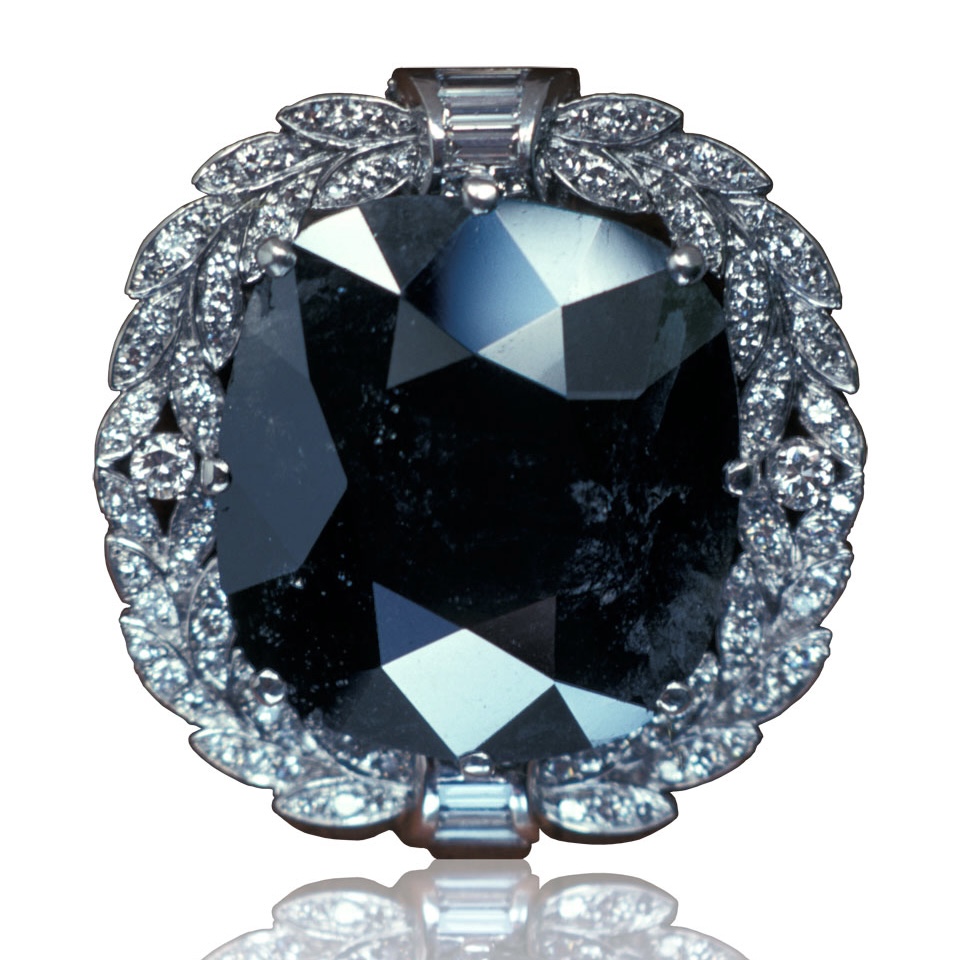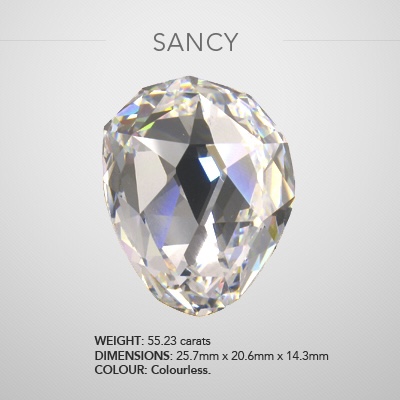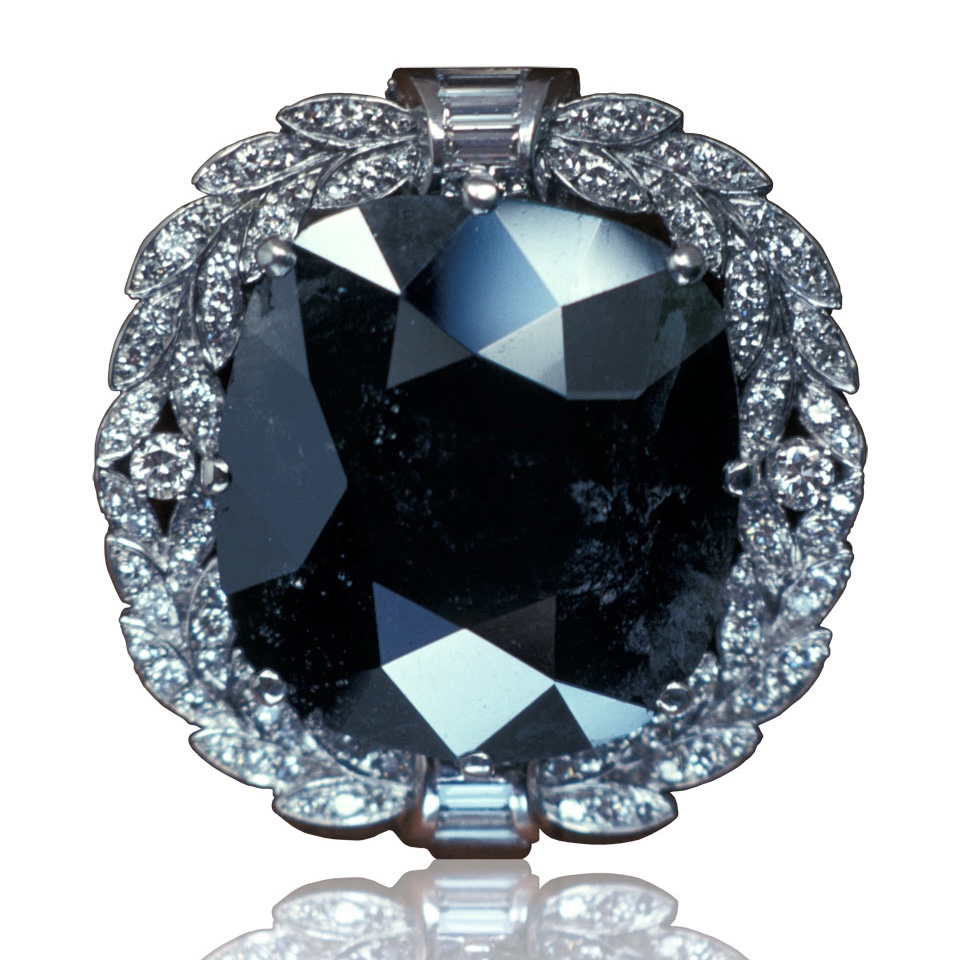
How to measure your, or your girlfriend’s ring size.
Knowing your ring size can make all the difference when

Every natural diamond has a deep and rich history, but some have more daunting pasts than the rest, and I love to read about them, don’t you?
Would you tempt fate and wear a cursed diamond—a stone known to contribute to the downfall of dynasties and leave a trail of death and destruction in its path?
What if it were the Hope Diamond, a 45.52-carat blue diamond whose owners were plagued with financial ruin, suicide, and even beheadings? Or the Sancy, a lovely 55.2-carat yellow diamond that was once swallowed by a servant and retrieved from his corpse? (Don’t fret; The Hope and the Sancy are safely stored in museums today and can’t harm anyone.)
Since their first discovery, diamonds have been imbued with mystical powers. Formed over billions of years deep within the earth, it’s easy to believe that diamonds have cosmic energy. And while that energy is generally positive (diamonds are considered to heal, protect and impart fearlessness)—after all, they are the universal symbol of love and commitment—some stones are notorious for their bad karma.
These cursed diamonds’ stories are the stuff of thriller novels and make the stone an even more intriguing and mystical natural jewel.

Over its 350-year history, the Hope Diamond has become one of the most famous cursed diamonds. After being stolen and recut, it is said to have contributed to the downfall and death of its owners.
The Hope diamond was discovered in India in 1673; it was initially a 115-carat blue diamond. Its owners included King Louis XIV and Marie Antoinette, who were both beheaded during the French Revolution.
In 1839, the stone was purchased by Henry Diamond Hope, who named it, the Hope Diamond. After his untimely death, his family sold it to pay off his gambling debts. Jeweler Wilhelm Falls acquired the diamond, and soon after, his son killed him, took the stone, and later committed suicide.
That didn’t scare off the young heiress Evalyn Walsh McLean who bought the cursed diamond. But buyer beware: She faced unimaginable loss, including the deaths of her son at age nine and daughter at age 25. Not to mention that after her husband left her, he went mad and died.
Walsh McLean’s heirs sold the stone to Harry Winston, who, after touring the infamous diamond around the country, made the wise decision to donate it to the Smithsonian. He famously mailed the priceless diamond to the museum via U.S. mail for $2.44 postage. Maybe he just wanted it off his hands.

The Sancy’s gruesome history dates to the 16th century. Three of its royal owners—Burgundy’s Charles the Bold, England’s Charles I, and France’s Louis XVI—faced horrific deaths after taking possession of the stone. Over the centuries, it was pawned to finance wars, stolen, and went missing for decades.
In the early 1600s, the diamond was named for its then-owner Nicolas de Harlay, Seigneur de Sancy, who served as King Henry IV’s finance minister. When Sancy’s loyal servant was delivering the diamond to its next owner, King James I, he was attacked by robbers, and rather than forfeit the treasure, he swallowed it. The poor fellow was murdered anyway, and the diamond was later removed from his corpse.
When King James I needed cash, he sold it to the French royal family, and during the French Revolution, it was stolen. It reappeared in the hands of a Russian prince, changed hands several more times, and in 1906 was acquired by William Waldorf Astor as a wedding gift for Lady Astor, who wore it on a tiara. In 1978, the Astor family sold the diamond to the Louvre for $1 million where it remains.

The Black Orlov was a cursed diamond from the start. The original 195-carat black diamond was once the eye of a 19th-century Hindu statue of Brahma, and the monk who stole the stone from the figure was murdered. A bad omen, but again, who would steal a diamond from the eye of a Brahma statue and not consider it to be a bad omen. .
Its whereabouts were unknown for decades until the jewellery dealer J.W. Paris purchased the diamond in 1932. His business failed, and he committed suicide by leaping from a New York highrise. Rather bizarrely, two Russian royals owned the diamond—and separately both jumped to their death. A brave Charles F. Wilson acquired the Black Orlov in 1950 and had it recut to 67.50 carats. Its last public sighting was at a Christie’s auction in 2006. Here’s hoping the new owner has much better luck.

Knowing your ring size can make all the difference when

As I shared in my previous newsletter, my visit to

Here is the story of how I gained even greater

Here’s my advice on how to care for your precious

What is the market for pink diamonds like? And what
During the past years, the use of diamonds as an investment and financial hedging tool has grown rapidly.
The reason is obvious: Diamond prices are always increasing. In the last 10-15 years, there’s been a huge interest in investing in colored diamonds, making prices for pink and blue diamonds rise by 400 %.
Read more about Investing in Diamonds













Stay informed about the captivating world of the diamond industry by signing up for our newsletter and receive exclusive insights and updates straight to your inbox.


Østerbrogade 226
Copenhagen Ø
TLF: 53532277
CVR: 40081321
Belgian phone no.: +32 485 00 58 42
Danish phone no.: +45 53 53 22 77
Email: trine@bylamm.com
![]()